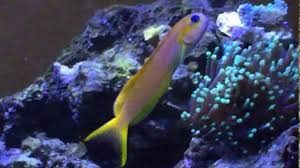The Dragon and Its Significance in China’s Spring Festival Traditions
The dragon is an iconic symbol in Chinese culture, holding deep significance in both historical and contemporary contexts. Rooted in centuries of tradition, it represents various attributes such as power, strength, prosperity, and divine protection. While the dragon’s presence is ubiquitous across many aspects of Chinese life, one of the most notable occasions where its symbolism shines is during the Chinese Spring Festival (also known as the Chinese New Year), the most important traditional festival in China.
The Spring Festival, celebrated at the onset of the lunar new year, is a time of family reunions, feasts, and cultural performances. It marks the beginning of a new year and is a time of renewal, hope, and new beginnings. The dragon plays a central role in many of the festival’s most cherished traditions, from the iconic dragon dance to the symbolism embedded in decorations and customs. This article will explore the importance of the dragon in Spring Festival celebrations, examining its cultural, symbolic, and ritualistic significance during this time.
The Role of the Dragon in Chinese Mythology and Culture
To understand the dragon’s role in Spring Festival traditions, it is essential to first look at the creature’s deep-rooted significance in Chinese mythology and cultural symbolism.
The Dragon as a Symbol of Power and Authority
In traditional Chinese culture, the dragon is revered as a symbol of imperial authority, good fortune, prosperity, and protection. Unlike the malevolent and destructive dragons found in Western mythology, Chinese dragons are generally seen as benevolent and helpful creatures. They are often associated with the emperor, who was believed to be the son of the dragon and the earthly representative of the divine.
The dragon’s power extends to its control over natural elements, especially water, rain, and wind. In an agrarian society like ancient China, these elements were crucial for successful harvests, making the dragon a highly respected figure for farmers and communities who depended on favorable weather for their crops.
In Chinese folklore, the dragon is often depicted as a majestic and benevolent being with a serpentine body, the scales of a fish, the claws of an eagle, and the antlers of a stag, representing the union of all elements in nature. The dragon is often portrayed alongside other auspicious creatures such as the phoenix, tiger, and tortoise, embodying harmony and balance in the natural world.
The Dragon and Its Connection to Chinese Philosophy
In Taoism, the dragon is a powerful symbol of Qi (life energy or vitality), embodying Yang energy (active, masculine, and dynamic). The balance of Yin (passive, feminine) and Yang is central to Chinese philosophy, and the dragon’s connection to Yang energy underscores its significance in the cosmic order. This link between the dragon and Taoist philosophy is crucial in understanding its role during the Spring Festival, a time when the renewal of energy and life is celebrated.
The Dragon and Its Role in Spring Festival Celebrations
The Chinese Spring Festival, which typically occurs between late January and mid-February, is a vibrant celebration marked by various customs, family gatherings, and cultural performances. The dragon’s symbolism and presence are integral to the festivities, which emphasize renewal, prosperity, and protection from evil spirits.
The Dragon Dance: A Cultural Highlight
One of the most prominent and well-known traditions during the Spring Festival is the dragon dance. This traditional performance is performed by a team of dancers who manipulate a large, colorful dragon puppet on poles. The dance is accompanied by the rhythm of drums, cymbals, and gongs, creating an atmosphere of excitement and festivity.
The dragon dance is believed to bring good luck, prosperity, and rainfall, which are essential for a bountiful harvest. The dance is particularly popular in southern China and is often performed in public spaces, streets, and temples. In mainland China, it is common for cities and towns to organize large-scale dragon dances as part of their Chinese New Year parades.
The performance of the dragon dance is a ritualistic act aimed at driving away evil spirits and welcoming the arrival of a prosperous new year. The movements of the dragon, often seen as energetic, flowing, and dynamic, are symbolic of vitality, strength, and good fortune. The presence of the dragon in the Spring Festival is seen as an embodiment of positive energy, reinforcing the idea of renewal and growth as the new year begins.
The Dragon as a Symbol of Wealth and Prosperity
During the Spring Festival, the dragon symbolizes wealth, success, and good fortune, all of which are essential themes of the festival. The dragon’s association with abundance is reflected in the decorations, gifts, and practices that take place during this time.
Dragon Motifs in Spring Festival Decorations
Homes and streets are often adorned with red lanterns, couplets, and other decorations featuring dragon motifs. Red, a color traditionally associated with luck and happiness, is commonly used in Spring Festival decorations, and the dragon’s presence on these items emphasizes its role in ushering in positive energy for the year ahead.
In addition to the dragon’s image, golden dragon symbols are also prominent, signifying wealth and prosperity. Dragon-themed decorations are often used to adorn doorways and windows, as it is believed that the dragon will protect the home and bring financial success to the household in the coming year.
The Role of the Dragon in Red Envelopes (Hongbao)
Another integral aspect of Chinese New Year celebrations is the giving of red envelopes (known as hongbao) filled with money as gifts to children and younger family members. These envelopes, often decorated with dragon imagery, symbolize the transmission of blessings and good fortune. The dragon’s association with wealth is particularly prominent in these gifts, with the intention that the recipient will receive prosperity, good health, and success in the coming year.
The red envelopes featuring dragons serve as a visual reminder of the imperial and cosmic powers that the dragon represents, reinforcing the belief that the coming year will be prosperous and filled with opportunities.
The Dragon and the Lunar New Year’s Connection to the Five Elements
The Spring Festival and its associated customs are often linked to the Five Elements of Chinese cosmology: Wood, Fire, Earth, Metal, and Water. The dragon, with its connection to water, plays a key role in this relationship, especially in terms of its symbolic power to control the weather and bring about favorable conditions for crops.
During the Spring Festival, many people practice rituals and offerings that align with these elements. In particular, water-related offerings, such as pouring water near a family’s altar or praying for rain, are common practices that tie back to the dragon’s power over the element of water. These offerings serve to ensure a prosperous and abundant year, particularly in agricultural communities.
The dragon’s connection to water is not just symbolic but also serves as a reminder of the ancient agricultural society that relied heavily on natural elements for sustenance and growth. Through these rituals, the dragon’s powers are invoked to ensure harmony between nature and human activity.
The Dragon and the Protection from Evil
In addition to its association with prosperity and good fortune, the dragon also holds significance as a protector. The Spring Festival is a time when families seek to protect their loved ones from misfortune, illness, and evil spirits.
The Dragon as a Guardian Spirit
During the Spring Festival, the dragon is often seen as a guardian spirit, warding off evil and protecting the home. Families may hang dragon-themed decorations or use dragon-shaped charms to ensure safety and protection in the year to come. The belief is that the dragon, as a divine and powerful being, will safeguard the family from negative forces and ensure that peace and happiness prevail.
The Role of the Dragon in Firecrackers
The setting off of firecrackers is a long-standing tradition during the Spring Festival, and this custom is believed to chase away evil spirits and bad luck. The loud noise is thought to scare away harmful entities, making way for a fresh and prosperous start to the new year. Firecrackers are often used in conjunction with dragon dances, amplifying the dragon’s protective power and ensuring that the spirits of misfortune are banished.
Conclusion
The dragon is not just a mythical creature in Chinese culture—it is a powerful symbol that embodies the very essence of life, prosperity, protection, and divine authority. Throughout the Spring Festival, the dragon plays a central role in numerous customs and rituals, serving as both a harbinger of good fortune and a protector against evil forces. Its presence in the dragon dance, decorations, gifts, and rituals underscores its enduring importance in Chinese cultural identity.
In the context of the Spring Festival, the dragon transcends its status as a mere symbol of power. It becomes a dynamic force that brings renewal, prosperity, and protection to families and communities across China. As the world continues to embrace the global significance of the Chinese New Year, the dragon remains a steadfast emblem of hope, vitality, and positive energy—elements that will continue to inspire generations to come.


